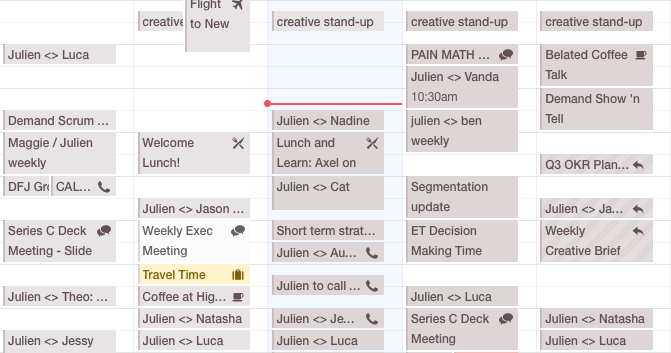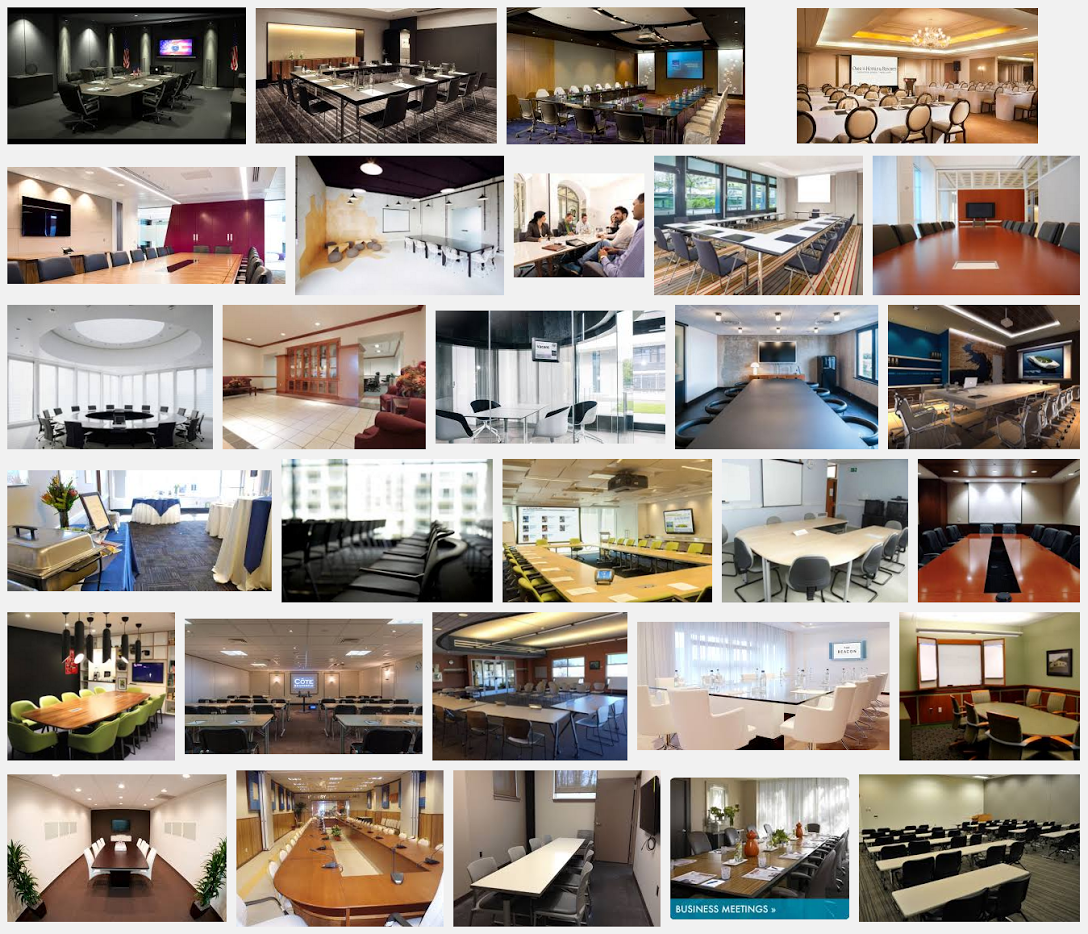This is the Best CEO Email I Ever Sent — Medium

When I finally started, it changed everything. So here’s the best one I have ever written. Hope you like it and it encourages you to do the same.
Whenever I get asked to describe the industry that Breather plays in, I have a choice. When people have never used it, I can say:
a) “well, people use us like Starbucks”
b) “we sell distributed office space”
c) “we are a commercial Airbnb”
d) “we are a network of meeting rooms”
e) many, many more
All the options that I have are boring, but the one I hate by far the most is meeting rooms. It makes my skin crawl. Unfortunately, it’s also turned out to be the most accurate. Shit.

So, what exactly is a meeting?
At base, a meeting is a thing that absolutely everyone hates going to.
If you have a meeting with someone, it’s either a catch-up, a sales pitch, or a someone is getting in trouble. I looked at all of the meetings on my calendar this week (there are 29 of them), and almost 90% fall into one or more of the categories above.

Yet, despite the fact that meetings are a huge part of everyone’s work life, nobody actually likes meetings. So naturally, I really don’t want to be in the meeting room business.
Before the current job my girlfriend had, she worked at a few other places. One of the most common complaints she had was “there are just so many meetings, I can’t even get my work done.” And this is incredibly common. Literally, every office worker out there thinks of meetings, not only as not work, but in some cases, as an activity that actively prevents work from happening. I’m sure you feel the same.
But wait, there’s more! I haven’t even really begun. This is only one of the many reasons people hate meetings. There are so many more to choose from!
Rooms Meetings Happen In
Meetings happen in lots of places, but almost all of them are bad for some reason.
Check out what happens when I literally just google “meeting room.” This is the thing people perceive.

Meeting rooms are considered to be the worst places in corporate America. They are one level away from “cracked out alleyway” in terms of how much people enjoy going to them.
Here — now that you’ve googled “meeting room,” google “alleyway.” You will actually see more attractive alleyways than most of the meeting rooms shown in your prior search. Now that’s really saying something.

The People That Go to the Meeting
Now check out the stock photography that represents meetings themselves. Here it is. Notice that in half of these pictures, the people involved are LITERALLY FACELESS. This is what we are dealing with when people think of meetings as an industry.

In the stock photos where people are not literally faceless, the other main things we see are power suits, drab colours, and pie charts. They exemplify the Microsoft Windows 95 era of what business looks like and is. You can just see the life draining from their faces (when they even have them).
Is there any wonder I don’t like the idea of being in the business of meeting rooms?

Meeting Rooms: A Tiny Industry Filled with Awful Websites
Even the good, modern meeting room websites are bad. I won’t name any names, but in general, when we look at websites, branding, marketing material, and (when available) mobile apps, they are just the fucking worst. Nobody wants to be associated with them.
Another thing that’s truly awful is that the whole meeting room industry is not that impressive — a total of maybe $10 billion, when you think of just the venues (i.e. the locations, which is the core of our business). It means that not only do people have a horrible impression of meeting rooms, not only do they despise the activities that occur in these rooms, but they also see the people inside as soulless automatons, and they think it’s a bad industry to target.
Yeah. No wonder everyone’s eyes glaze over when I talk about meeting rooms.
But Wait: What Are Meetings, Though, Really?
But here’s something I figured out through my reluctant exploration of the meeting room industry.

The average meeting length in the industry mags is roughly 4 hours. In the “meeting room industry,” anything under 4 hours isn’t considered a meeting. Neither is anything that isn’t for the explicit purpose of business — if it didn’t happen for explicit business purposes, it’s not considered a meeting. Neither is anything under 10 people. No wonder the market size seems so small.
And hey, neither are the things that happen outside of meeting rooms. Isn’t that odd?
So church groups? Not meetings. Actors rehearsing? Not a meeting. A creative brainstorm that lasts 3 hours? Not a meeting. A 2 hour Skype call to negotiate a deal? Even that is not a meeting!
Now, that’s interesting, because we know that, at Breather, our average booking is less than 4 hours (you can book any time you like). And we also know that people book our rooms for tons of types of meetings — many of which aren’t explicitly about Windows 95 at all. And you know what? We’re ok with that.

So what does this mean for us?
Well, let’s go through the list above.
A. Breather spaces are nicer than regular meeting rooms.
B. Breather is used by non-faceless individuals, that we actually care about, often smiling and producing great ideas — or hanging out and getting work done on their own.
C. Breather allows any time of booking, often with no lead time.
D. Breather doesn’t care if you talk about Windows 95 or not.
E. Breather is used way more casually, and way more often, than any other meeting room is.
F. Breather is in dense, core, downtown areas — not near the airport (at least, not yet).
G. Yet, Breather is the fastest growing of anyone in our vertical, the most funded, and people seem to like us the most and tell all their friends.

I don’t know what you guys think — but when I look at G, I think it’s principally because we broke literally every other rule out there. A through F are the opposite of what we see out there in the world, and that, so far, has resulted in more success — and that success doesn’t seem to be going away.
I think there is a lesson here. And from the inside, when you look at what’s happening, it might even be completely obvious, but for others looking in, it still isn’t obvious at all.
The lesson is: We are going to succeed when we care more than others. We are going to succeed when we sweat the stuff that others take for granted. We are going to succeed when we dare to go against the status quo.
No matter how big we get, let’s never forget that.
Remember: if we keep working, and keep caring, more than other people, all of the above images will be wiped out of people’s heads. Those images will be replaced with our spaces, our people, and our details… all the things we chose, and the things we care about.
From within our small rooms, and with our own crazy ideas, we can remake a whole industry. It’s possible. In fact, it’s already happening.
Just look around. 🌲

